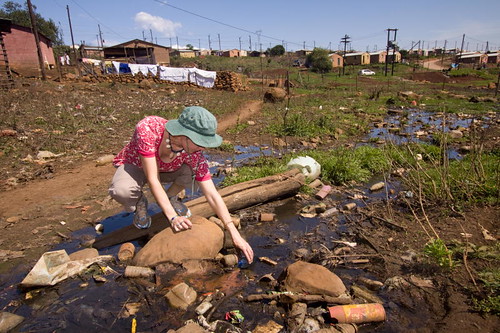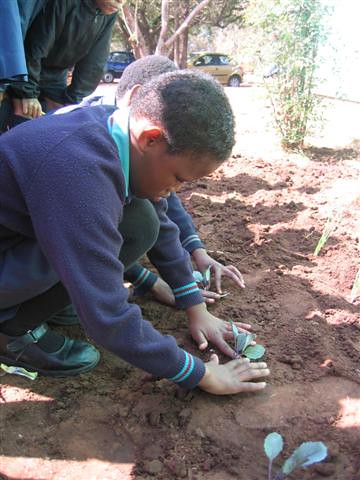One of the most exciting things I was able to find in my time in South Africa was the Eco-Schools Programme, an international awards program for environmental management, certification, and sustainable development in schools, clubs and education centers. It is overseen by the Foundation for Environmental Education (FEE) in Europe, and implemented in South Africa by WESSA, so in my short time volunteering with them I was able to get a glimpse into this wonderful program. As a whole-hearted, vehement supporter of environmental education in every shape and form, I think Eco-Schools is exactly the kind of program that should be in schools around the world; and frankly, that's the direction they're headed: as of October 2009, the program was being implemented in 47 countries around the world, involving 30,000 schools, 8 million students, 400,000 teachers and 4,000 local authorities (according to Eco-Schools USA). The U.S. is a new-comer to the program, hosted by the National Wildlife Federation since December 2008, with about 380 participating schools. South Africa has been involved in Eco-Schools since 2003, and has nearly 1,150 schools participating.
Here's an overview of how the program works, according to the Evaluation of the Eco-Schools South Africa Programme, prepared by Eureta Rosenberg on behalf of WESSA, WWF-SA and C.A.P.E. (Cape Action for People and the Environment):
In South Africa, schools which register with the Programme must:
· Audit environmental conditions and resource use at their school
· Implement projects to improve their environmental conditions and resource use
· Conduct environmental education lessons; and
· Report annually on their progress to the Eco-Schools coordinators, who convene panels of experts to assess the schools’ work.
Lessons can be conducted in any subject and topics include wise use of resources, habits for healthy living, and caring for each other and the earth. Popular projects in rural and urban areas are food gardens, bringing back indigenous biodiversity, wetland - or soil rehabilitation, recycling and measures to conserve water and energy. Each environmental improvement must be maintained, even as new ones are introduced in subsequent years of registration.
I had the opportunity to help evaluate some of the Eco-Schools portfolios to help determine whether they merited an award for their work throughout the year, and I was really impressed by the efforts some of these schools were making toward environmental sustainability and awareness. One small, rural school I evaluated had done a project focused around a river which ran alongside their school. The water from this river was gathered by some people for drinking or cooking, but women also washed clothes in it and some students were spotted using it as a toilet, while pollution and litter were inhibiting the water's flow and causing stagnancy. Teachers in the school recognized the health risks the current state of the river could cause to the students, wildlife and the whole community, and they decided to use the Eco-Schools program to do something about it. The students took a field trip to the river and worked together with teachers to identify pollutants and their sources, then determine ways to reduce pollution and rehabilitate the river and its habitats. They incorporated lessons in biology, math, health and other subjects to take an interdisciplinary approach to the problem, and then the students took what they learned home to their parents, and as a result to the whole community. This becomes so much more than a school lesson or a quick project by a few community members: it spreads awareness and reform through the entire community and makes real, tangible change a possibility.

That's what really makes me excited about the Eco-Schools program: it teaches environmental education through practice. It shows students, schools and the community that taking steps to help the environment actually helps themselves, by saving money, improving health, and allowing them to become more self-sustaining. It encourages students and teachers to undertake projects themselves, giving them ownership and increasing the likelihood that the projects will continue for years to come. It requires commitment and drive from all those involved, but has really amazing benefits for those who are willing to do the work.


No comments:
Post a Comment